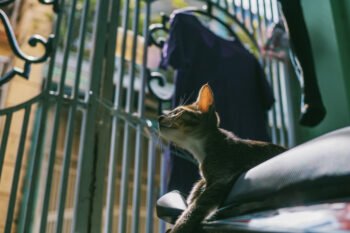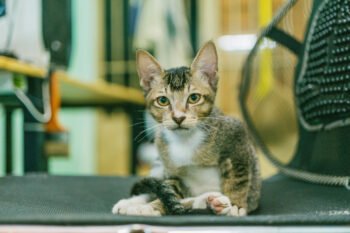Many people know someone who has diabetes, but did you know that this someone could be your cat? “Diabetes is pretty common in middle-aged cats,” says Dr. Katy Nelson, a Virginia-based emergency veterinarian. “Cats tend to develop type 2 diabetes: Their cells stop responding to insulin. Just like with type 2 diabetes in older people, you can induce remission by modifying what they eat and how much they weigh.”
Below, Nelson explains the signs and treatment of diabetes mellitus (aka “sugar diabetes”) in felines.
Diabetes Mellitus in Cats
Humans get two types of diabetes (type 1 and 2), and so do pets. Cats are far more likely to develop type 2, which results from genetic factors as well as being inactive and overweight. As many as one in 50 cats are diabetic, and incidence seems to be increasing with growing numbers of obese, inactive house cats.
Studies have shown that almost half of all healthy cats will develop impaired glucose tolerance — a risk factor for diabetes — when they increase their body weight by around 40 percent. Neutered male cats older than 8 years are at highest risk, as are cats that have had pancreatitis. For cats 8 years and older, incidence of diabetes increases to one in 10.
Symptoms of Cat Diabetes
“PU/PD,” says Nelson, referring to polyuria (urinating a lot) and polydipsia (drinking a lot). “All of a sudden, you can’t keep the water bowl full, and the animal is going outside of the litter box.” Sudden weight change — loss or gain — and vomiting and diarrhea are also possible symptoms.
“The symptoms are pretty non-specific. We commonly have people bring their cats in when they’re acting strange, drinking and peeing a lot. The worst case scenario is in multi-cat households, where owners have a harder time identifying PU/PD,” she says. “I’ve seen cats get brought in after collapsing in diabetic ketoacidosis, which is essentially when they’ve been hyperglycemic for so long that the muscle and organ tissue starts to break down. This is a veterinary emergency.”
How Is Cat Diabetes Treated?
There is no cure for cat diabetes. However, it can go into remission with insulin treatment and proper diet. Even when this is not the case, diabetes can be managed in order to maintain a pet’s quality of life. The treatment for cat diabetes is three-part:
- Insulin “This is No. 1,” says Nelson. “Diabetic remission is about good regulation early on, particularly with a new type of insulin called glargine.” Typically, cats should be injected twice daily, at fairly precise 12-hour intervals. Oral medication can also be administered to some healthy diabetic cats, but this is less likely to be effective than insulin. The cat may not even notice the small needle, if administered in the scruff of the neck while the cat is eating.
- Diet Nelson recommends canned food because of its high-protein, low-carbohydrate content. “It can work wonders. Along with insulin therapy, it can induce remission within one to two months if you do things the right way,” she says. Cats with diabetes need their meals to be delivered on a consistent schedule as well.
Exercise
Your veterinarian should supervise your cat’s workout
regimen along with its insulin and diet. Many doctors will recommend that you
take five minutes a few times each day for active play with your cat. You can
also place small meals around your home to encourage your cat to do some
walking.







